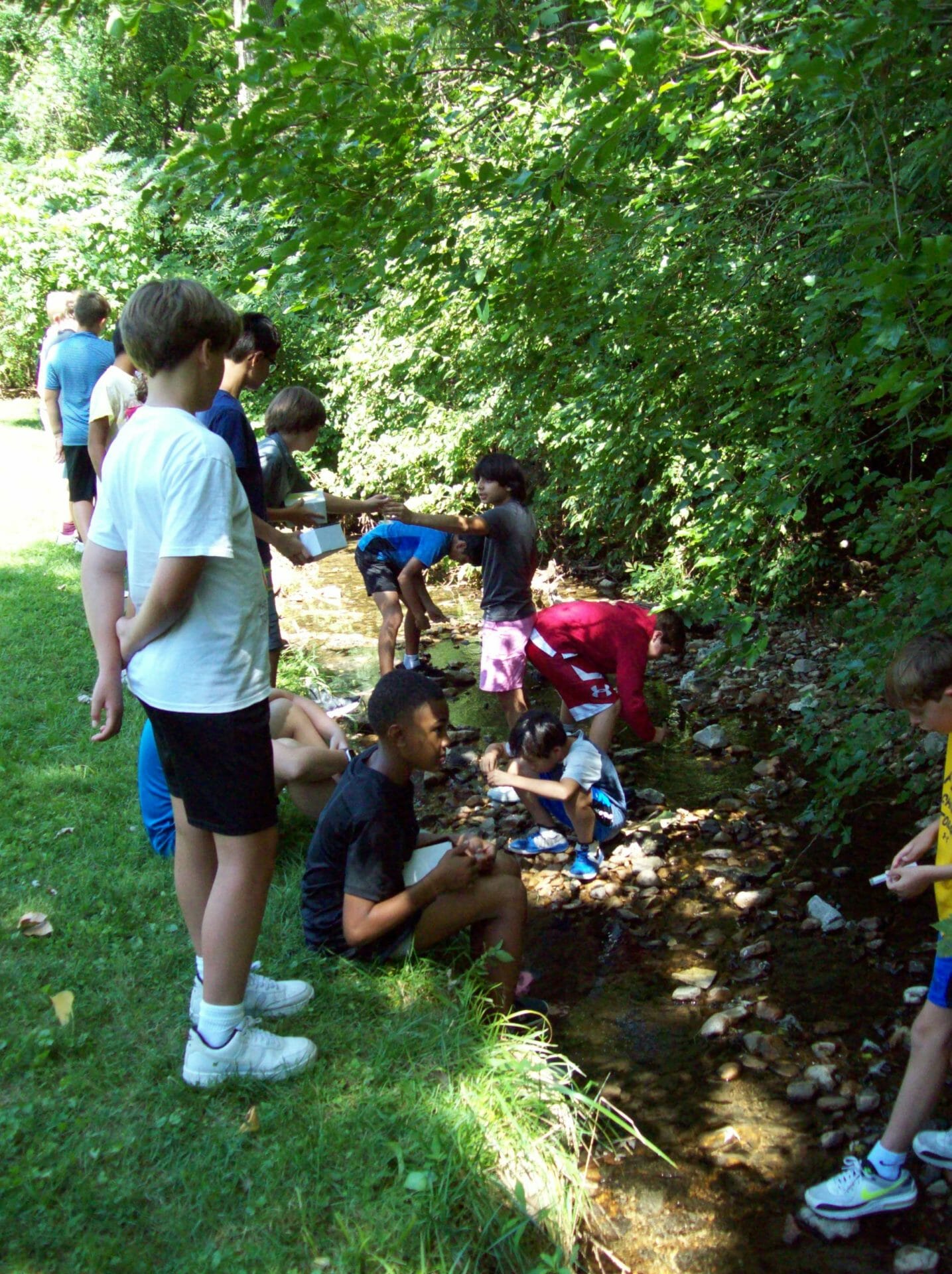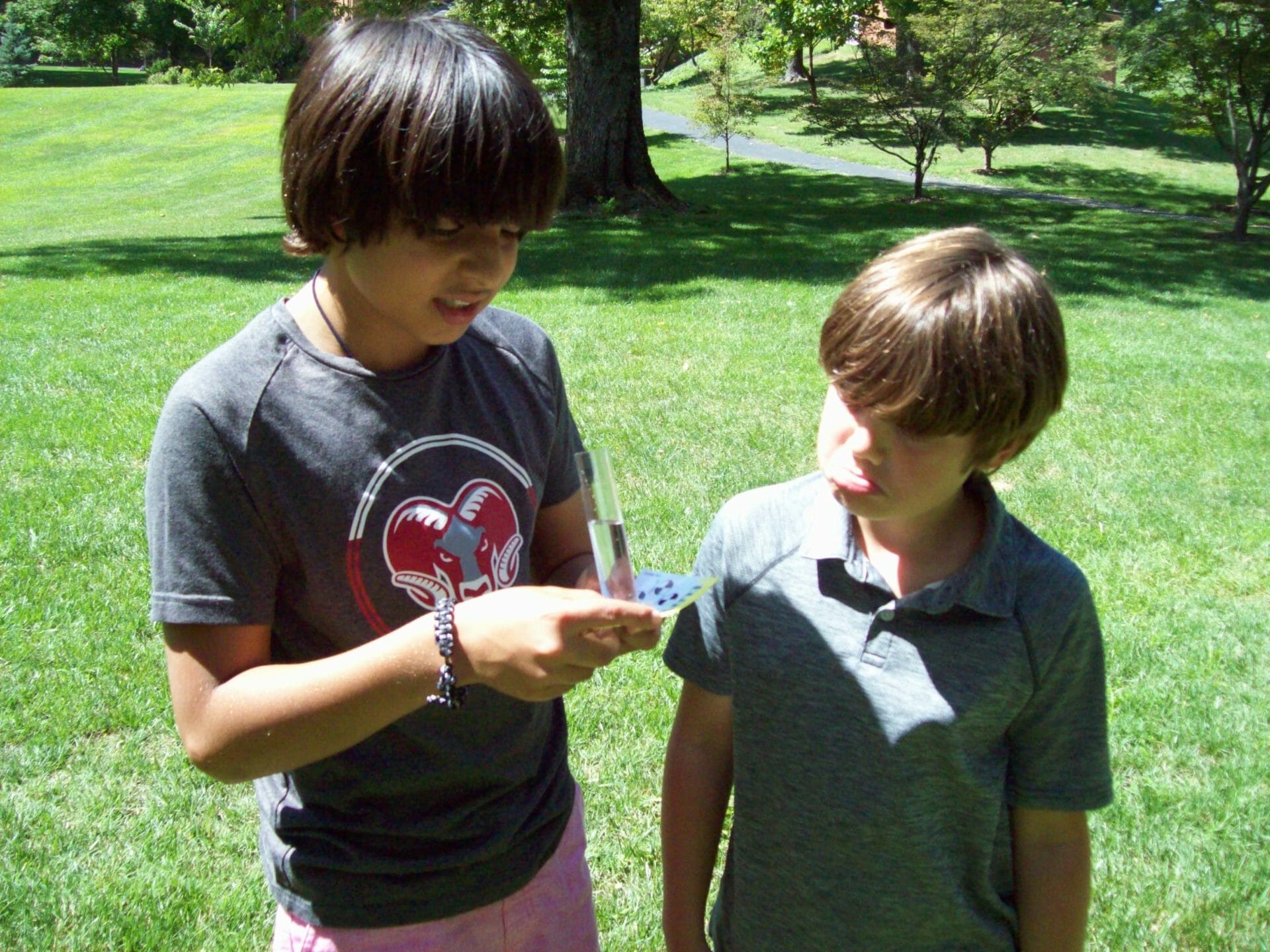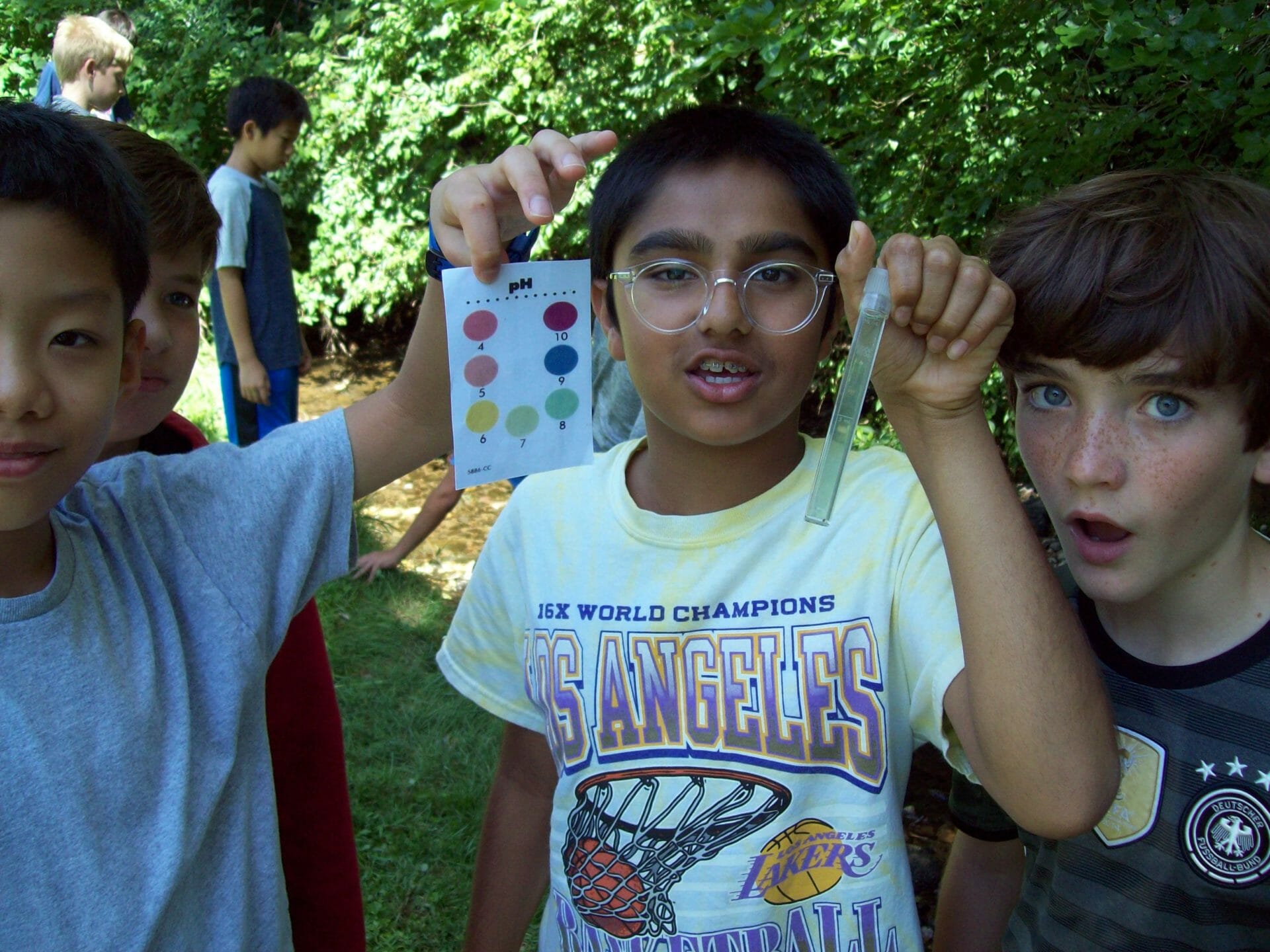Sixth-grade scientists conducted chemical tests on the campus creek’s water this week, measuring levels of dissolved oxygen, nitrates, phosphates, pH levels, and turbidity to check the stream’s health. They used prepared chemicals from a water testing company, adding creek water to a tablet and observing the color change.
„Like with all testing, results varied depending on the test used,“ said Sixth Grade Science Teacher William Bander. „Dissolved oxygen was ‚mid‘ as the students put it, due to the creek being small with little flow; meaning the air is not likely to get mixed in as well as higher flow streams. Nitrates and phosphate levels were bad, as these pollutants likely get washed in from parking lots and treated fields and lawns around campus. However, the turbidity was crystal clear with low temperatures and a perfectly neutral pH. These all support aquatic health, which explains why students saw minnows and sunfish swimming in large numbers in the creek.“
Shu-Hao Liu ’29 said, „Testing the creek water was really fun, and we learned a lot about the different measurements used to test if the water is clean. We also learned that we can keep the water clean by not throwing trash into it, but a lot of times it is nature that pollutes the water.“
Dissolved oxygen is important as aquatic organisms, such as fish, need it to breathe. Nitrates and phosphates are pollutants commonly associated with chemical runoff from sources such as fertilizer, herbicides, pesticides, and chemicals used to treat roads and sidewalks. pH measures how acidic or basic something is. Too much of either can be harmful to wildlife. Ideally, aquatic ecosystems should have a middle pH of around 7. Turbidity is the measure of how cloudy the water is. Water that is too cloudy makes it difficult for aquatic plants and algae to get sunlight and can have a ripple effect across the food webs of the creek.
Shayaan Merchant ’29 said, „I absolutely loved the project. My group tested the water for turbidity, which is how clear the water is. This is tested by looking at a shaded circle through the water, and based on how dark it is, we judge how turbid it is. Our creek has good turbidity, (0.) Besides this, we learned many staggering facts during the assignment. In fact, we, and all other animals, drink, bathe, and more with just 0.3% of the world’s water. 99% is salty, and 0.7% is ice.“
Students learned how to conduct these tests, and they discussed the importance of monitoring our water resources for relative health both for human use and for use by our local wildlife. They recorded their results in their lab book and discussed possible reasons for the results.
„I’d just like to send out the message that it is extremely urgent to try to save our world’s freshwater, however, small the contribution,“ said Merchant. „Just don’t waste it by throwing away old water, or using appliances unnecessarily. Let’s work together to save our Earth!“
The study was part of a unit on the role of water for human use, as well as its importance in aquatic ecosystems. Our intrepid scientists will continue testing on the creek next week with a macroinvertebrate test for water quality.




